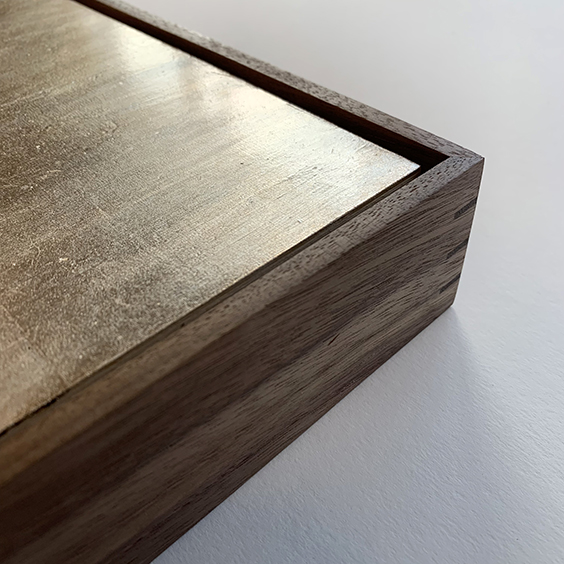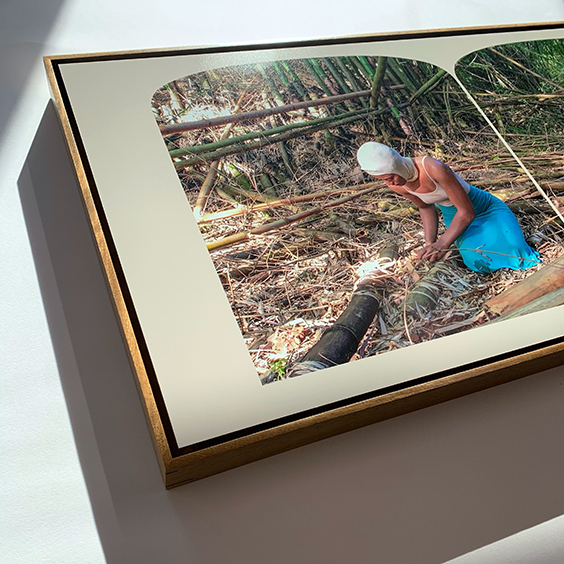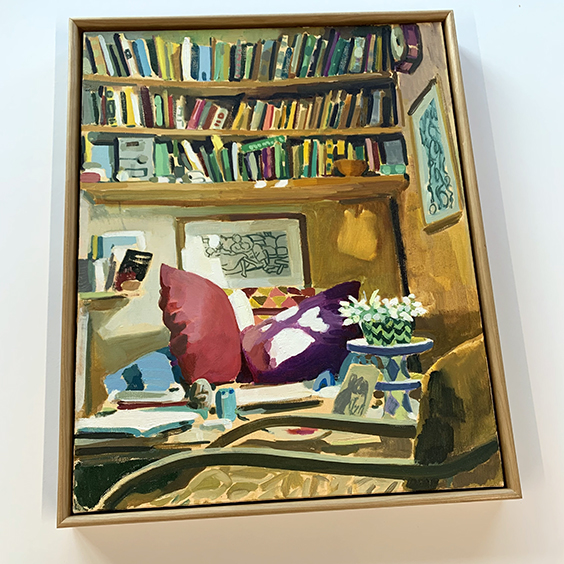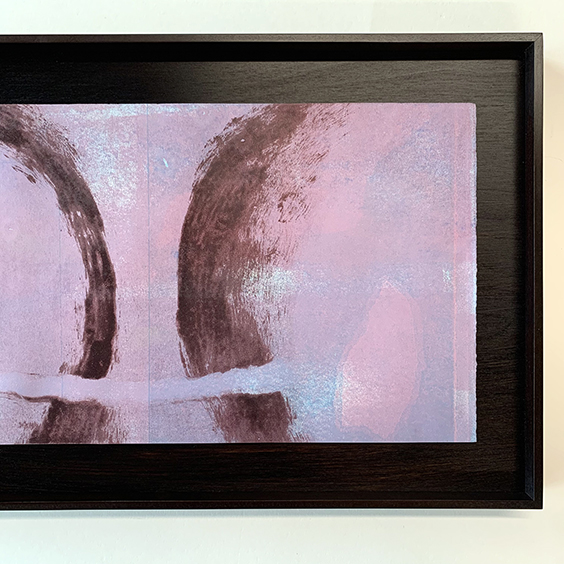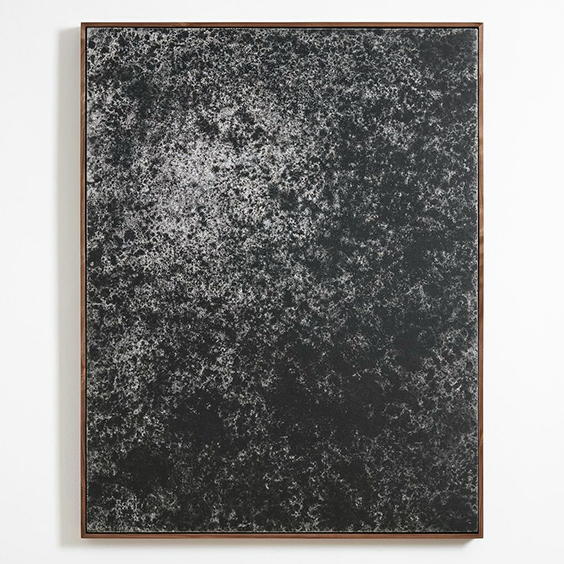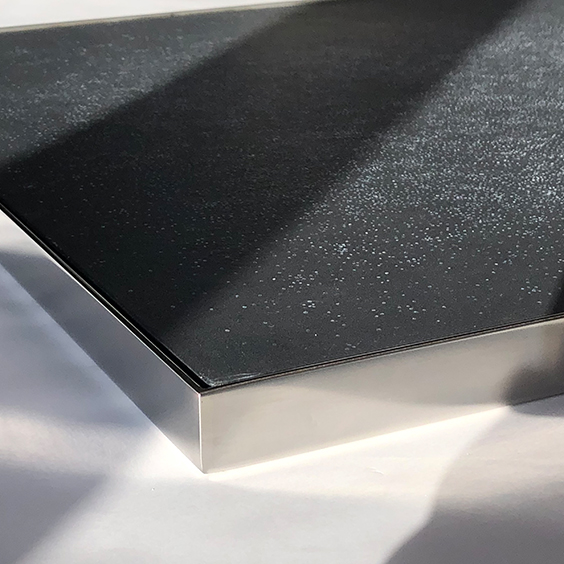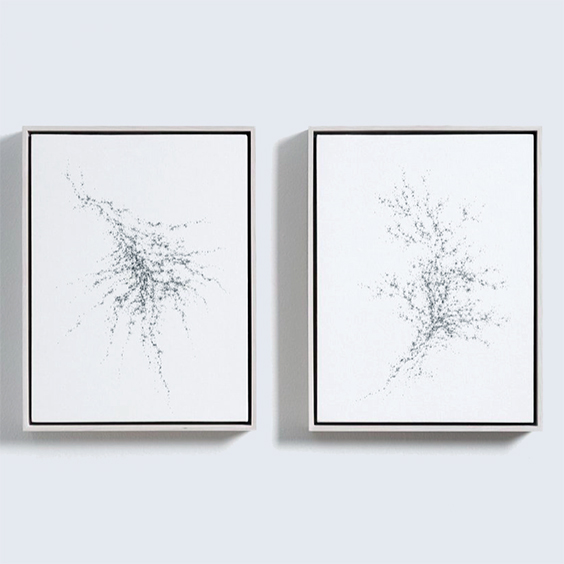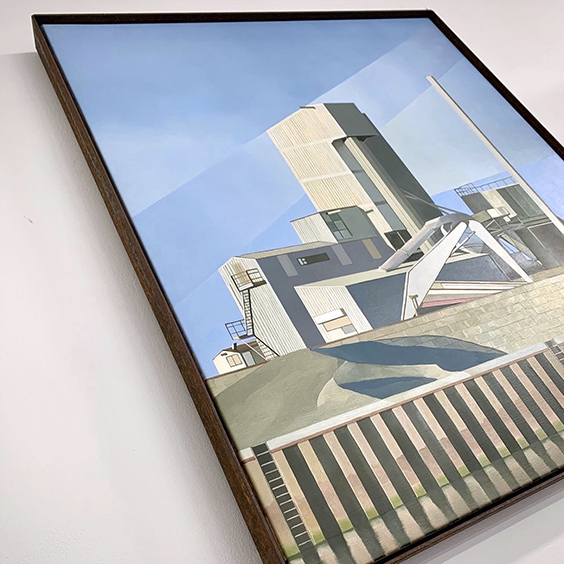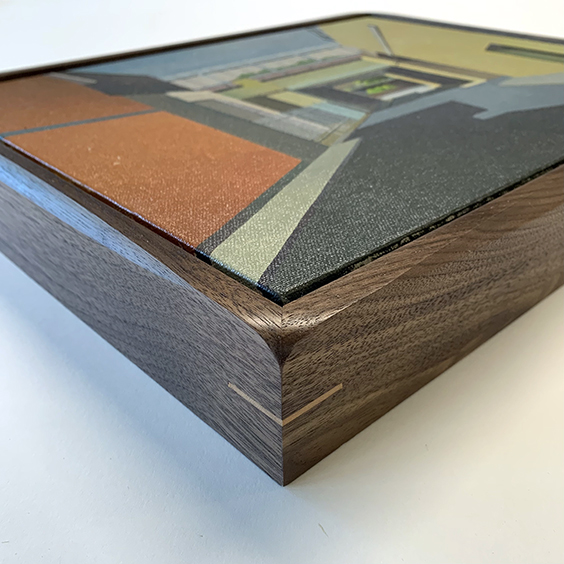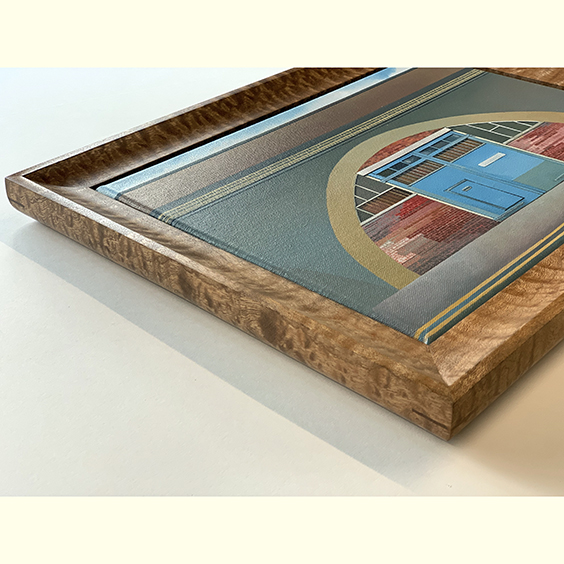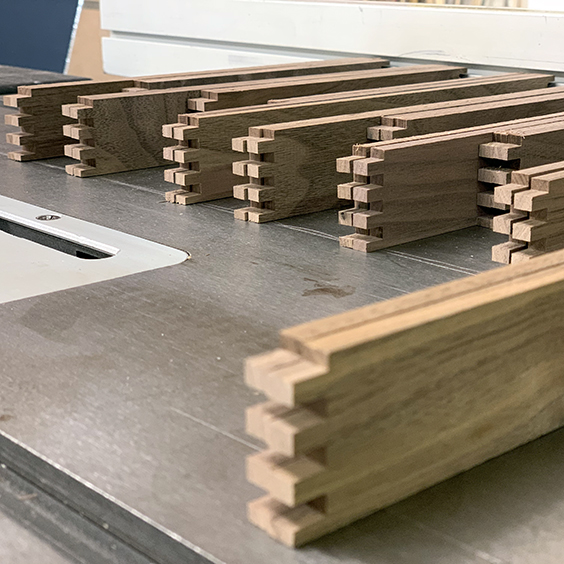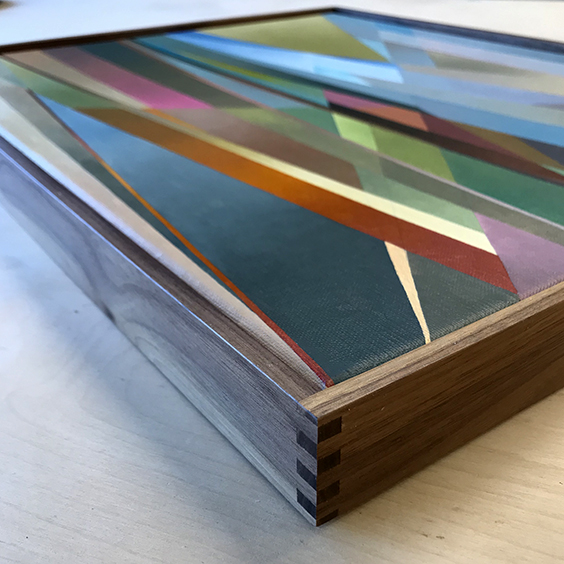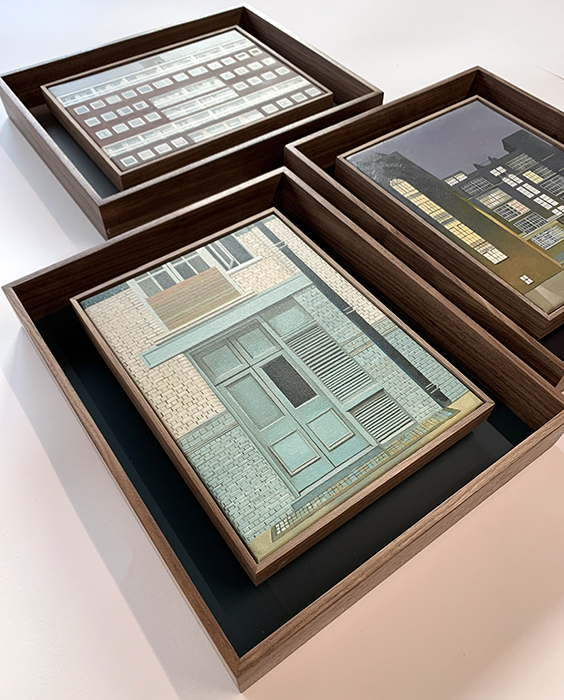Tray Frames
1. Tray Frames
Tray frames are made from an open L-shaped profile and are used to display works on canvas and on panels where the surface protection normally provided by glazing is not required.
If the artist's surface has particularly vulnerable characteristics such as paints with migrant pigments (highly susceptible to UV damage), material that may be ruined by moisture or dust, chalk / charcoal that is permanently changed if touched, or in the case of photographic work, an unprotected printed surface, then we would always recommend an alternative such as box framing with protective glazing.
A tray frame can provide important edge protection for the work and some surface protection as the artwork is sunk back very slightly, as well as a safe way to hang the piece.
Primarily though this choice is driven by appearance and the wish to have a tactile and uninhibited experience of the work.
Tray frames do provide important edge coverage that can help conceal unfinished edges in much the same way that an artist-made strip frame would do.
A slim shadow gap can emphasize the object quality of the work by revealing the edge very slightly. And since the fixing of the work is done at the reverse of the frame, the work can appear to float.
By increasing the shadow gap there is an opportunity to reveal more of the interior of the frame, useful if the work is helped by the presence of the frame material, or if it benefits from the increase in size overall.
